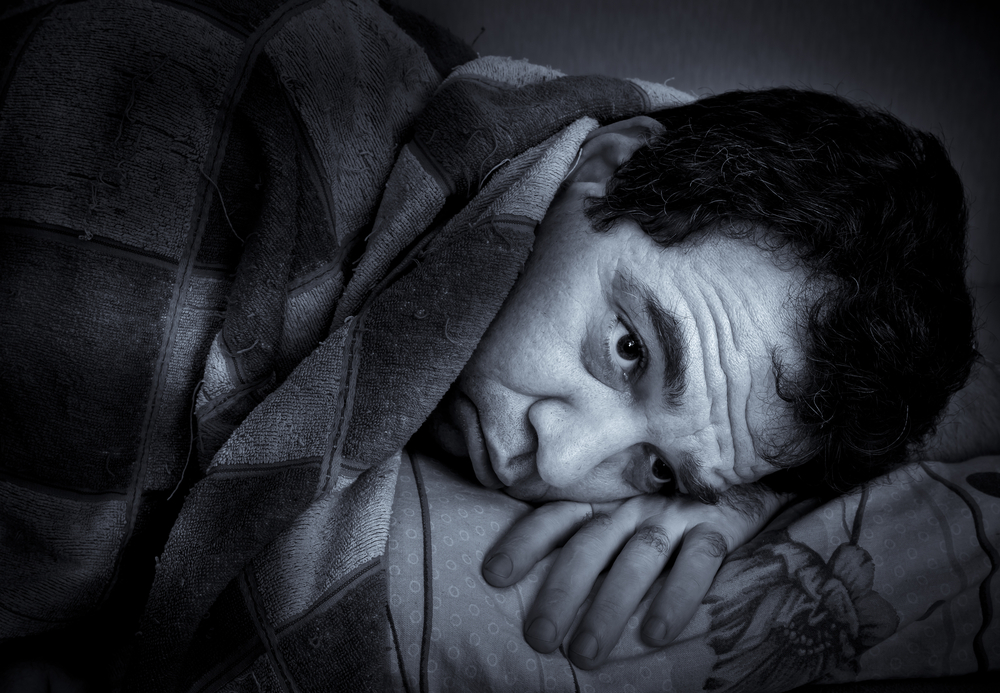
Anxiety disorders are one of the most prevalent comorbidities in people with bipolar disorder, with lifetime comorbidity estimated as high as 75% (Merikangas et al, 2007). In a cohort of 138 people with bipolar disorder, Boylan et al. (2006) found that 56% had a comorbid anxiety diagnosis whereas in Otto et al. (2006), 32% of 1,000 outpatients with bipolar disorder also had an anxiety diagnosis.
Unsurprisingly the presence of an additional anxiety disorder has been associated with higher levels of manic and depressive symptoms and a lower quality of life (Lee & Dunner, 2008; Kauer-Sant’Anna et al, 2007). Simon et al (2007) also found that current anxiety comorbidity was associated with more than twice the odds of current suicidal ideation in a sample of 150 outpatients with bipolar disorder.
Current NICE guidance for bipolar disorder recommends the treatment of anxiety according to relevant NICE clinical guidance in addition to treatment for bipolar disorder. However, it is not clear whether treatment will be as effective in this population, as people with bipolar disorder are often excluded from anxiety treatment studies. In addition, pharmacological treatment, usually indicated for anxiety disorders can be addictive (e.g. benzodiazepines). This is a cause for concern in such a population, due to the heightened risk of substance dependencies (Brunette et al. 2003).
To investigate whether interventions can reduce anxiety in people with bipolar disorder, Stratford and colleagues (2015) carried out a systematic review of psychological therapies for anxiety in people with bipolar spectrum disorders, including:
- Cyclothymia (chronic episodes of hypomania and minor depression)
- Bipolar I and II disorders
- Bipolar disorder ‘not otherwise specified’

People with bipolar disorder frequently have a comorbid diagnosis of anxiety, which in turn is associated with greater levels of manic and depressive symptoms.
Methods
The search for evidence included the use of electronic databases, a manual search using reference lists of related papers, contacting researchers and Internet searches using Google Scholar.
Studies were included if:
- Participants had a bipolar spectrum disorder
- Anxiety outcomes were reported both before and after the intervention
- The intervention targeted anxiety and/or bipolar disorder
- The paper was published in a peer-reviewed journal
Studies including children and adolescents were excluded, as were studies with a clearly different focus of treatment.
Due to heterogeneity of the evidence, it was not possible to conduct a meta-analysis. Studies were reviewed narratively and for ease of interpretation, summarised in three different groups according to the target of therapy. These were:
- Interventions including components which target both anxiety and bipolar disorder
- Interventions targeting specific anxiety disorders in a population with bipolar disorder
- Interventions targeting bipolar disorder symptoms only which additionally report anxiety outcomes

Studies were included if the intervention targeted anxiety and/or bipolar disorder.
Results
In total, 22 studies met the inclusion criteria for this review. The majority of studies recruited participants who were in-between acute mood episodes.
The most common type of treatment was cognitive behavioural therapy (CBT) which was delivered both on an individual and group basis. In the majority of cases, participants were concurrently taking medication for bipolar disorder (including lithium, anticonvulsants, antidepressants and anxiolytics).
Outcomes were mostly continuous anxiety measures. Only seven studies were randomised controlled trials (RCT). Other studies were non-randomised trials (k=3), uncontrolled pre-post studies (k=7) and single-case studies (k=5).
Interventions including components that target both anxiety and bipolar disorder
- At the RCT level, there were two studies of CBT with an added anxiety component, which showed some long-term evidence of benefit for anxiety.
- One trial of mindfulness based cognitive therapy (MBCT) showed a reduction in anxiety diagnoses post-intervention, but this did not hold at follow-up.
- There was some evidence in favour of stress-management therapy for self-reported anxiety; however, this was an uncontrolled pilot study with a small sample size (N=10).

Interventions that included components that targeted both anxiety and depression, involved CBT, MBCT and stress management therapy.
Interventions targeting specific anxiety disorders in a population with bipolar disorder
- Only one RCT of CBT for post-traumatic stress disorder (PTSD) was located. There were significant improvements in PTSD symptoms and self-reported anxiety; however, this was in a severe mental illness population of which only 23% had a bipolar spectrum diagnosis.
- Further reductions in self-reported anxiety were found in uncontrolled studies.
Interventions targeting bipolar disorder symptoms only, which reported anxiety outcomes
- Three RCTs targeting bipolar symptoms, which also measured symptoms of anxiety, were located.
- One large trial of computerised psychoeducation, which was compared to an active control, failed to find a significant between-groups effect for anxiety.
- A trial of group CBT compared with treatment as usual showed significant within-group improvements in the intervention group but not in the control group. However, between-group effects and follow-up results were not reported raising concerns about the reliability of the study.
- In a trial of group MBCT compared with treatment as usual, self-reported anxiety was found to worsen in the control group, whereas no change was found in the intervention group. There was some evidence in favour of group CBT on clinician rated anxiety from a non-randomised controlled trial. However, there were many methodological issues with the study.
Conclusions
The authors concluded that:
The studies reviewed above are extremely heterogeneous, in terms of patient characteristics, treatments applied, design, and outcome measurement, and this limits the extent to which clear clinical implications can be drawn. Therefore, we may have to conclude that it can be useful to target anxiety in bipolar disorder via a psychological treatment approach, but that at present it is not clear how best to do so.
Strengths and limitations
This was a good quality systematic review in that it was guided by the Cochrane Collaboration’s handbook and the PRISMA checklist. However, due to the heterogeneity in the study designs, populations, interventions and outcomes a meta-analysis was not possible, which makes the interpretation of findings challenging at best.
The main limitation to this review is the lack of evidence both for interventions targeting anxiety in a bipolar population and for anxiety outcomes in trials targeting bipolar disorder. Despite a thorough search of the literature, only 10 controlled trials were located. The inclusion of uncontrolled studies and case reports provides an interesting insight into the comorbidity, but may risk clouding the reader’s judgement with regards to the effectiveness of treatment.

Despite a thorough search of the literature, only 10 “extremely heterogeneous” controlled trials were included in the review.
Another limitation is in the presentation of results. Rather than reporting the significance of findings within studies, it would have been of interest to see effect sizes calculated, where possible, to gauge just how large the effects were in positive trials and ease comparison between studies.
Summary
It is clear from the literature that anxiety in bipolar disorder is associated with poor outcomes. Therefore, a review of psychological therapies in this population is clearly warranted. Whilst the authors did a good job in locating studies, it is hard to reach any conclusions based on the available evidence. Just looking at the RCT evidence, CBT which specifically targeted anxiety appears to have the best support; however, confidence in this finding is low.
This review clearly highlights a general problem in research where participants with comorbid conditions are often excluded from research studies. While this is important to reduce variability in studied populations, it is not reflective of the true presentation of conditions in real-world clinical settings and limits external validity.
More good quality RCTs, including participants with both anxiety and bipolar spectrum disorders, are required before any clear guidance on treatment can be recommended.

Authors were thorough in their approach to locating studies, but the heterogeneity of studies meant clinically relevant conclusions were difficult to draw.
Links
Stratford HJ, Cooper MJ, Di Simplicio M, Blackwell SE, Holmes EA. (2015) Psychological therapy for anxiety in bipolar spectrum disorders: a systematic review. Clinical Psychology Review, 2015; 35:19-34.
Merikangas KR, Akiskal HS, Angst J, et al. (2007) Lifetime and 12-month prevalence of bipolar spectrum disorder in the National Comorbidity Survey replication. Archives of General Psychiatry, 2007;64:543-552.
Boylan KR, Bieling PJ, Marriott M, Begin H, Young LT, MacQueen GM. (2004) Impact of comorbid anxiety disorders on outcome in a cohort of patients with bipolar disorder. Journal of Clinical Psychiatry, 2004;65(8):1106-13.
Otto MW, Simon NM, Wisniewski SR, Miklowitz DJ, Kogan JN, Reilly-Harrington NA et al. (2006) Prospective 12-month course of bipolar disorder in out-patients with and without comorbid anxiety disorders. British Journal of Psychiatry. 2006;189:20-5.
Lee JH, Dunner DL. (2008) The effect of anxiety disorder comorbidity on treatment resistant bipolar disorders. Depression and Anxiety. 2008;25(2):91-7. [PubMed abstract]
Kauer-Sant’Anna M, Frey BN, Andreazza AC, Ceresér KM, Gazalle FK, Tramontina J, da Costa SC, Santin A, Kapczinski F. (2007) Anxiety comorbidity and quality of life in bipolar disorder patients. Canadian Journal of Psychiatry, 2007;52(3):175-81. [PubMed abstract]
Simon NM, Zalta AK, Otto MW, Ostacher MJ, Fischmann D, Chow CW et al. (2007) The association of comorbid anxiety disorders with suicide attempts and suicidal ideation in outpatients with bipolar disorder. Journal of Psychiatric Research. 2007 41(3-4):255-64. [PubMed abstract]
Brunette MF, Noordsy DL, Xie H, Drake RE. (2003) Benzodiazepine use and abuse among patients with severe mental illness and co-occurring substance use disorders. Psychiatric Services, 2003;54(10):1395-401. [PubMed abstract]

Psychotherapies for anxiety in bipolar disorder: Elena Marcus finds inconclusive results in this recent system… http://t.co/fHwTfK1XEy
RT @Mental_Elf: Psychotherapies for anxiety in bipolar disorder http://t.co/Q4um33dYXK
Raluca Lucacel liked this on Facebook.
Alison Parker liked this on Facebook.
Olivia Cialdi liked this on Facebook.
June Dunnett liked this on Facebook.
.@BipolarUK @BipolarBlogger @bipolarucl New blog: Psychotherapies for anxiety in bipolar disorder http://t.co/Q4um32Wo6c
The Mental Elf liked this on Facebook.
Today @_elenamarcus on a recent SR of psychological therapy for anxiety in bipolar spectrum disorders http://t.co/Q4um32Wo6c
Lisa Costello liked this on Facebook.
Sam Ingram liked this on Facebook.
Mental Elf: Psychotherapies for anxiety in bipolar disorder http://t.co/BvMtWR3L25
Don’t miss: Psychotherapies for anxiety in bipolar disorder http://t.co/Q4um32Wo6c
Christina Armstrong-Graham liked this on Facebook.
Schizophrenia – Mom’s Journey liked this on Facebook.
#ActuSanté – #Psychotherapies for anxiety in #bipolar disorder http://t.co/zXZiQjuaH2 By @_elenamarcus via @Mental_Elf
Psychotherapies for anxiety in bipolar disorder http://t.co/udylL9eY7u via @sharethis
Psychotherapies For Anxiety In Bipolar Disorder http://t.co/Ej60Ot50gj
قرابة 70% ممن لديهم #ثنائي_القطب، لديهم قلق ايضاً. فما فاعلية العلاج النفسي مع هذه الفئة؟
تقييم لدراسة تتناول ذلك.
http://t.co/SaCHjE1WSi
[…] Psychotherapies for anxiety in bipolar disorder […]
[…] Psychotherapies for anxiety in bipolar disorder […]